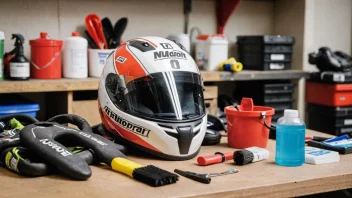Rugby, a sport renowned for its physicality and intensity, demands not only skill and strategy but also a deep understanding of safety practices, particularly in tackling techniques. With the sport's increasing popularity and the subsequent rise in awareness surrounding player safety, it is imperative to explore the science behind effective tackling. This article delves into the mechanics of tackling in rugby, emphasizing the importance of technique and safety equipment, while also offering insights into how players can enhance their performance on the field.
The Mechanics of a Safe Tackle
A well-executed tackle in rugby involves a balance between aggression and technique. Understanding the mechanics behind a tackle is crucial for minimizing the risk of injury. The fundamental principles include:
- Body Positioning: The tackler must approach the ball carrier with a low center of gravity, bending their knees and keeping their hips low. This positioning helps maintain balance and control.
- Head Placement: One of the most critical aspects of a safe tackle is where the tackler places their head. It should always be to the side of the ball carrier, never in front, to reduce the risk of head injuries.
- Use of Arms: Tacklers should wrap their arms around the ball carrier, ensuring a firm grip while simultaneously driving with their legs to bring the opponent down safely.
- Follow Through: After contact, the tackler must follow through effectively, using their body weight to bring the ball carrier to the ground while avoiding dangerous fall positions.
Training for Effective Tackling
Training plays a significant role in mastering safe tackling techniques. Coaches and players alike must focus on specific drills that reinforce proper form and execution. Here are some effective training methods:
- Controlled Drills: Engage in drills that simulate game situations while prioritizing safety. This includes practicing tackles in a controlled environment with a focus on technique over force.
- Video Analysis: Utilizing video footage of professional matches can help players visualize proper tackling techniques and learn from both successful and unsuccessful tackles.
- Partner Work: Practicing tackles with a partner allows players to receive immediate feedback on their technique, helping them make real-time adjustments.
- Conditioning: Fitness is paramount in rugby. Players should incorporate strength and conditioning programs that focus on core stability, leg strength, and agility to enhance their tackling performance.
The Role of Protective Gear
While technique is paramount, the use of appropriate protective gear significantly contributes to player safety. Rugby players typically wear:
- Headgear: Although not mandatory, headgear can provide additional protection against minor head injuries and abrasions.
- Shoulder Pads: These pads can help absorb impact and reduce the risk of shoulder injuries during tackles.
- Compression Wear: Tight-fitting clothing can aid muscle support and recovery, potentially reducing the risk of injuries.
It's essential for players to ensure that their protective gear fits properly and complies with safety regulations, as ill-fitting equipment can be counterproductive and increase the risk of injury.
Advancements in Rugby Safety Technology
The world of sports technology is ever-evolving, and rugby is no exception. Recent advancements focus on improving player safety and performance through innovative solutions:
- Smart Helmets: Equipped with sensors, these helmets can track impact levels, providing valuable data to coaching staff about the frequency and severity of head impacts.
- Wearable Technology: Devices that monitor players' physical exertion and biomechanics can help in identifying patterns that lead to injuries, enabling coaches to tailor training programs accordingly.
- Impact-Resistant Materials: The development of new materials for protective gear that better absorb impacts is crucial in reducing injury rates among players.
Improving Performance While Maintaining Safety
Balancing performance enhancement with safety is vital in rugby. Here are some strategies for players to consider:
- Mindset Shift: Emphasizing the importance of safety in training and matches encourages players to prioritize technique over brute force.
- Regular Assessment: Conduct regular assessments of tackling techniques and fitness levels. This ensures players are continually adapting and improving their skills.
- Education: Ongoing education about the risks associated with improper tackling can lead to more conscientious players who are aware of their impact on safety.
Conclusion
Rugby tackling is both an art and a science, requiring a keen understanding of technique, safety measures, and the latest advancements in athletic technology. By focusing on proper mechanics, engaging in effective training, utilizing protective gear, and embracing technological innovations, players can significantly improve their performance while prioritizing their safety and that of their teammates. As the sport continues to evolve, a commitment to maintaining high safety standards will ensure that rugby remains an exciting and safe sport for all participants.






